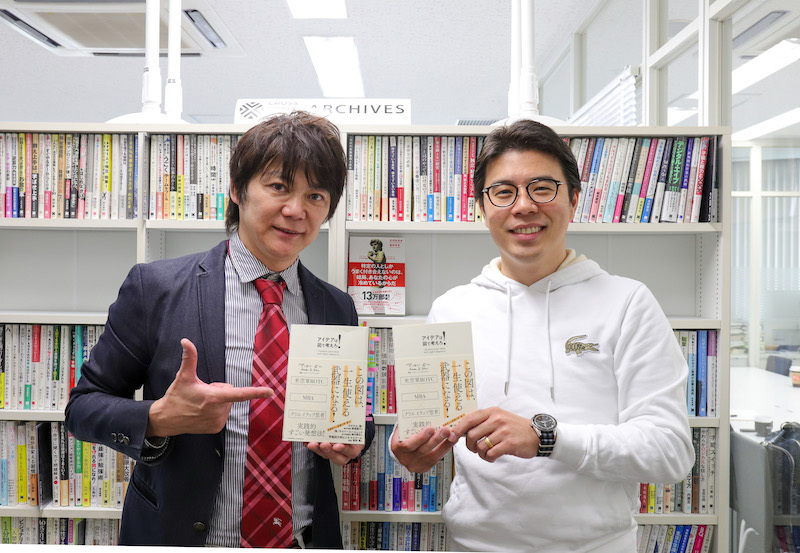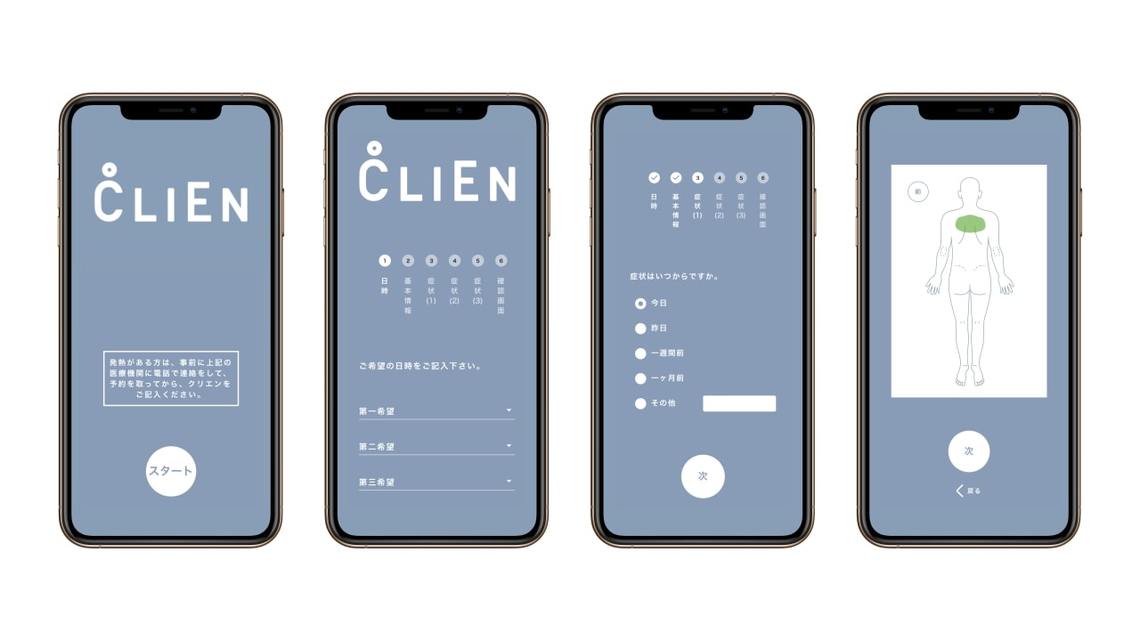This series explores the potential for idea generation through dialogues with experts, starting from Dentsu Inc. Creative Planner Aaron Zu's book " Think in Diagrams! ", published in October 2021.
This time, we welcomed Professor Shugo Hotta from Meiji University's Faculty of Law, who specializes in communication analysis within the judicial system, as our guest. We discussed "how to create ideas," incorporating academic perspectives.
There is a correct way to create ideas
Hotta: I read "Think in Diagrams!" and thought it was truly an excellent book. It's a volume you can use as a "fountain of business knowledge." While it's a book about ideas, it covers everything from marketing to leadership. Reading just this one book is worth the value of graduating from an MBA program.
Aaron: Thank you.
Hotta: I believe my specialty is generally recognized as proving know-how with scientific evidence. While your book already includes substantial scientific backing, I hope this discussion, incorporating my knowledge and insights, will lead to new discoveries.
For example, in the book, there's a discussion about how "discomfort is important." This has psychological roots. Fundamentally, humans want to maintain the status quo when things are peaceful.
So, even the slightest change immediately grabs our attention. This is fundamental to human perception because any change could potentially threaten our own survival, our family, or the prosperity of our descendants.
The catchphrases Aaron and his team create work the same way. When you see the copy, you think, "Something's missing!" and it hooks you, making it memorable.
There's actually a rule called "axioms" at work here. (※1) If any of these four are violated, people feel a sense of discomfort and start paying attention. The main four axioms are:
- The Axiom of Quantity
- Axiom of Quality
- Axiom of Manner (Communication Style)
- Axiom of Relevance
※1 Grice, H. P. (1975). Logic and Conversation. In Peter Cole and Jerry L. Morgan, eds., Syntax and Semantics, Vol. 3, Speech Acts, 41–58, New York: Academic Press.
By deliberately violating these principles, one can artfully create dissonance. In linguistics and science, this dissonance is called "markedness." I became famous overnight by applying this to trademark analysis (laugh).
Aaron: Trademarks?
Hotta: Exactly. Names for services or products like "Excelsior Coffee" or "Iemon." When registering a trademark, distinctiveness—the ability to distinguish it from others—is required. My theory is that this distinctiveness arises precisely by deliberately violating these four axioms.
Aaron: The service name "Clién," which I devised and trademarked at Dentsu Inc., is an abbreviation for "Clinic Entry System." Which axiom does this fall under?
Hotta: It stems from the discomfort caused by violating the quantity axiom. The quantity axiom states that the amount must be appropriate. Communication becomes difficult if there are too few words, or conversely, if there are too many.
When people sense this kind of discomfort, they start looking for hidden meanings. They wonder, "Is this person not talking because they have something secret they want to hide?" or "Are they talking so much because they're hiding something?" They focus on the background.
"CliEn" cuts off and connects the essential information "Clinic Entry System." This creates discomfort due to deviating from the quantity axiom. While generic names can't be trademarked, sometimes simply shortening them like this allows registration.
Aaron: I see! The "Choi Mac" introduced in this book also falls under the axiom of quality, right?
Hotta: Yes. "Choi Mac" violates the axiom of quantity, and at the same time, by using the slang "choi" for "chotto" (a bit), it also violates the axiom of manner or delivery.
For example, in America, there's a powder called Bisquick. This is a combination of "Biscuit" and "quick." It violates the quantity axiom because "Biscuit" is shortened, and it violates the quality axiom because it uses "quick" instead of the expected "-quit." It's an example that violates both axioms simultaneously.
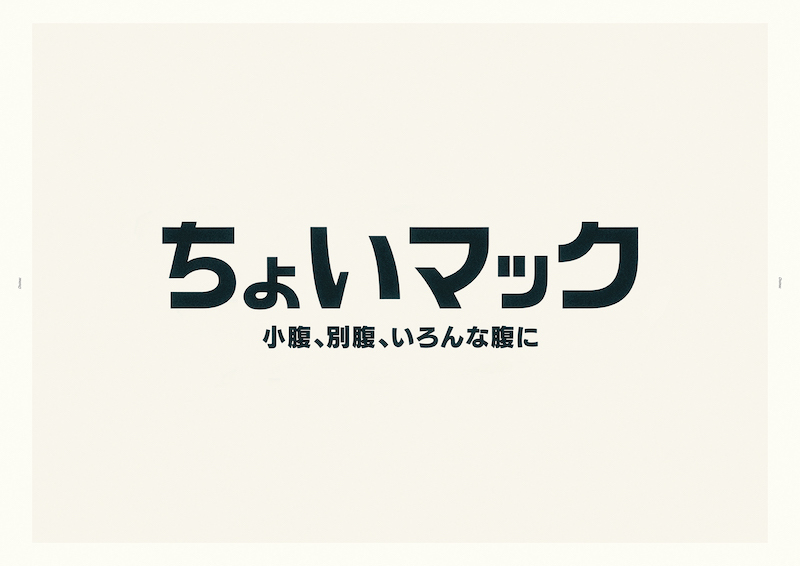
(Copywriter: Hirose Dai)
Aaron: So it falls under two axioms simultaneously. In that case, "Satofuru" would also be a violation of the quality axiom, right?
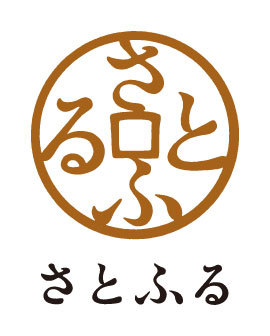
(Copywriter: Hirose Dai)
Hotta: That's right. It's essentially reversing the concept of "hometown."
Aaron: Is this a quality axiom?
Hotta: No, this is an axiom of how to convey it. We're conveying it by reversing it. That's exactly what they do in industry jargon, right? Like "seesu."
The axiom of communication is to "convey things concisely and clearly" to avoid ambiguity. But here, we're deliberately shifting that, making it intentionally unclear. In communication terms, it's like speaking in a whisper or shouting loudly when you don't need to.
The axiom of quality is "Don't lie." Meaning, "Don't say things that aren't true." For example, a street vendor might joke, "That's 2 million yen!" when the actual price is 200 yen. That sense of incongruity lets you grasp the intent: he wants to make you laugh.
Aaron: Schauessen's "Schauessen flips the script" is also about how you convey it, right?
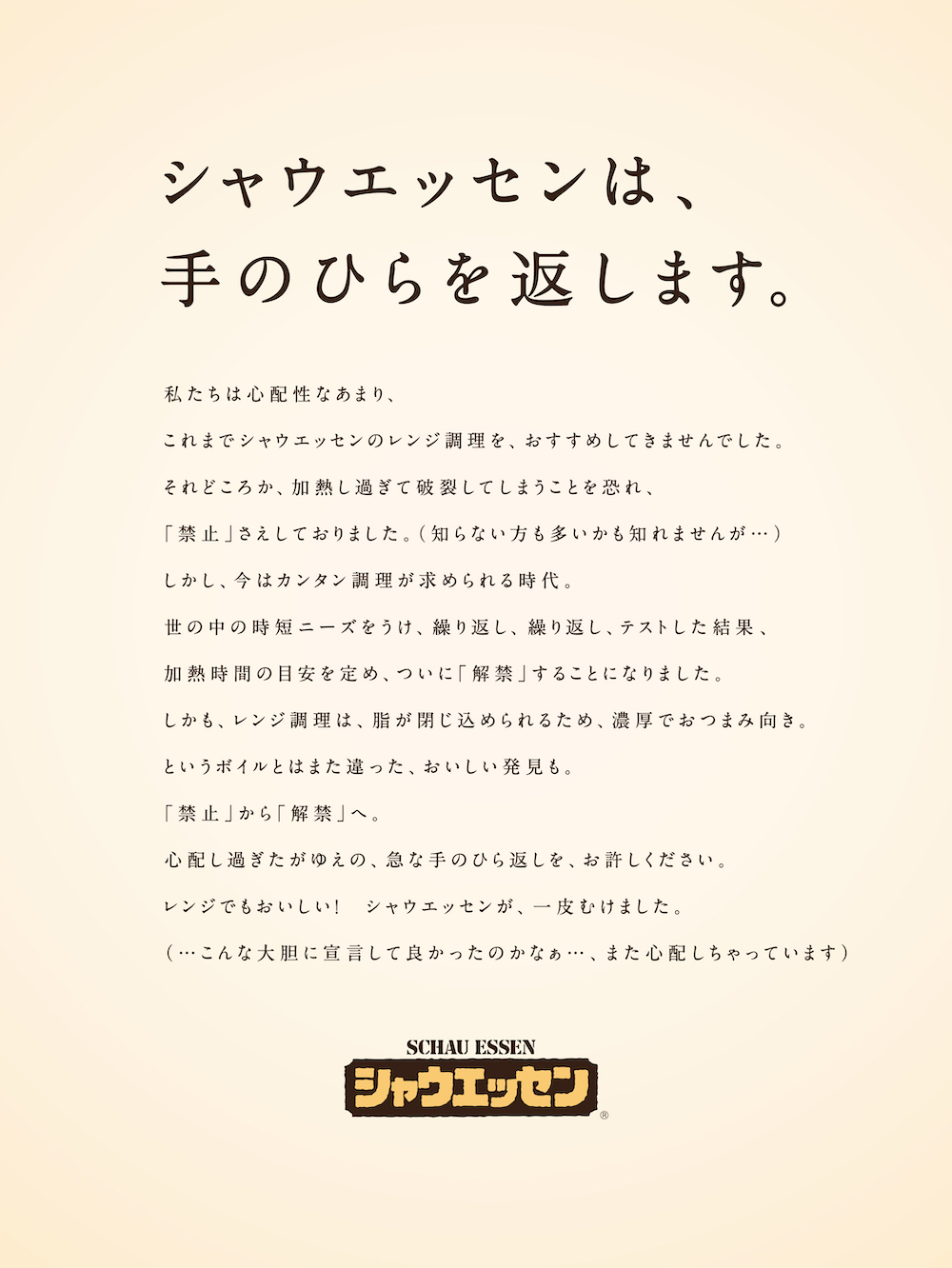
(Copywriter: Naoki Hayasaka)
Hotta: Here, the quantity is also insufficient. The part about "what exactly" it's turning its palm on is missing. That missing information makes you wonder, "What could it be?" Creating a sense of incongruity from some violation of axioms is fundamental to copywriting.
Aaron: The same could be said for the World Instant Noodles Association (WINA) copy: "Noodle as a Planet."

(Copywriter: Aaron Zoo)
Hotta: That's the copy Aaron came up with, right? Isn't this a violation of the axiom of relevance?
The principle of relevance states that you must talk about something relevant. For example, if you ask, "How's work lately?" and get a reply like, "Well, the Giants won yesterday's pro baseball game..." you'd assume they don't want to talk about work, right?
"Noodle as a Planet" also violates the axiom of relevance because it connects Earth and noodles—things that seem completely unrelated at first glance.
Aaron: I see! You've analyzed everything (laughs).
Hotta: In the world of law, the concept of "significance" was apparently quite an "aha moment."
But in daily life, if you don't use it strategically, it backfires. You just come across as someone who can't read the room or doesn't get it.
You know how sometimes ideas just don't come to you? As you wrote in your book, Aaron, ideas come to you. But there are times when they just won't come, right?
But as a professional, you have to produce something consistent. In those moments, I think learning this craftsmanship—deliberately creating this kind of discomfort—can make the process more efficient.
Aaron: I think thinking about the "concept" in the "Growth Model: Stump Buzz Theory" I wrote about in this book is very similar to advertising copy or copywriting.
For example, a vision like "Let's build a world-class company" creates room for interpretation, right? From a sales perspective, it might mean sales prowess; from an engineer's perspective, it might mean technical strength. Each interpretation is slightly different, but the organization aims for one common goal.
However, with a concept, you aim for something like WINA's "Noodle as a Planet." It encompasses everything while distilling it into a memorable phrase.
The method Professor Hotta taught us—intentionally creating a sense of dissonance—felt particularly useful when crafting concepts.

Aaron Zoo
Leverage the Default Mode Network
Hotta: In this book, there was a section titled "Once you've thought of an idea, do nothing." From a neuroscience perspective, that state is called the "default mode network." (※2)
The more you're spacing out, the more active your brain actually is, making it easier for various ideas to emerge. When experiments were conducted under conditions like dancing, listening to music, or riding an exercise bike, research showed that creativity peaked while riding the exercise bike.
Another example is an editor who used to be a competitive swimmer. He says ideas come to him while swimming. For him, swimming is an automated task. When performing automated tasks, ideas just pop up constantly. Doing simple tasks doesn't require intense focus, so the whole brain gets engaged.
Still, intentionally zoning out is tough. Linking it to some routine makes it work. For me, I often find myself staring at an hourglass.
※2 Raichle, M. E., MacLeod, A. M., Snyder, A. Z., Powers, W. J., Gusnard, D. A., and Shulman, G. L. (2001). A default mode of brain function. Proceedings of the National Academy of Sciences of the United States of America 16, 98(2), 676-82.
Aaron: I've had similar experiences many times. In my case, when I think and keep thinking, I start to run out of ideas. Then I naturally start to zone out.
Hotta: Actually, there's already research on this. It's based on puzzle experiments, but we know that focusing too intensely on a task makes it harder to approach something with fresh ideas. (※3) When the brain concentrates, blood is directed to one area to make it work efficiently, making other parts less active. That's why you become single-minded, or lose sight of the bigger picture, and ideas stop flowing.
However, if you concentrate and then let your mind wander, the blood that was pooled in one area starts circulating throughout the entire brain. This allows the whole brain to function, fostering connections between "seeds" of ideas that hadn't existed before. In fact, it's said that when you're actually daydreaming, you're using about 15 times more energy.
※3 Lu, J. G., Akinola, M., & Mason, M. F. (2017). "Switching On" creativity: Task switching can increase creativity by reducing cognitive fixation. Organizational Behavior and Human Decision Processes, 139(C), 63-75.
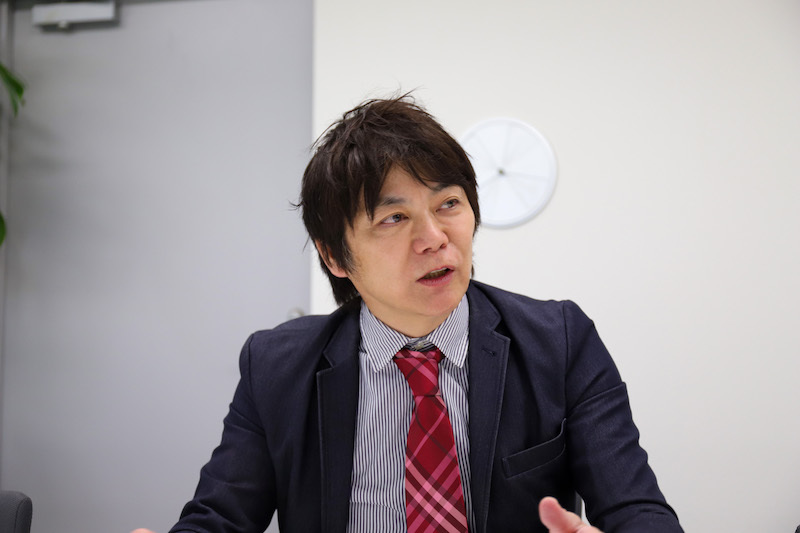
Shugo Hotta
Aaron: It uses 15 times more energy?
Hotta: That's right, fifteen times. Put another way, even though all these resources and seeds are lying around inside your brain, when you focus intensely on one thing, all the circuits connecting those seeds get shut off.
When you stop focusing on just one thing, energy spreads throughout the whole brain, allowing connections to form. That's why new ideas emerge. The state where alpha waves are present is the best.
Aaron: Alpha waves are those brain signals that come out when you're relaxed, right? When do alpha waves actually appear?
Hotta: Alpha waves come out when you close your eyes and just relax quietly. Also, drinking alcohol or taking a shower makes it easier for alpha waves to appear. That's why you get those "Aha!" moments of insight while showering.
I used to make music, and I found that you absolutely cannot create a good song by trying too hard. The best songs come to me half-asleep in dreams or just casually while out walking.
There's a singer named Junko Yagami. Her first and second singles didn't sell as well as she hoped, and she was struggling. But while walking around Harajuku, the phrase "Mizuiro no Ame" (Blue Rain) popped into her head, and it became a huge hit.
Aaron: That's true. A famous copywriter at our company once said that things felt intuitively right often end up being the most polished copy.
Hotta: I absolutely agree.
Aaron: When you think logically, hone it relentlessly, and it becomes second nature—that's when you get that "Aha!" moment, and that's when the best copy comes out.
(Continued in Part 2)





